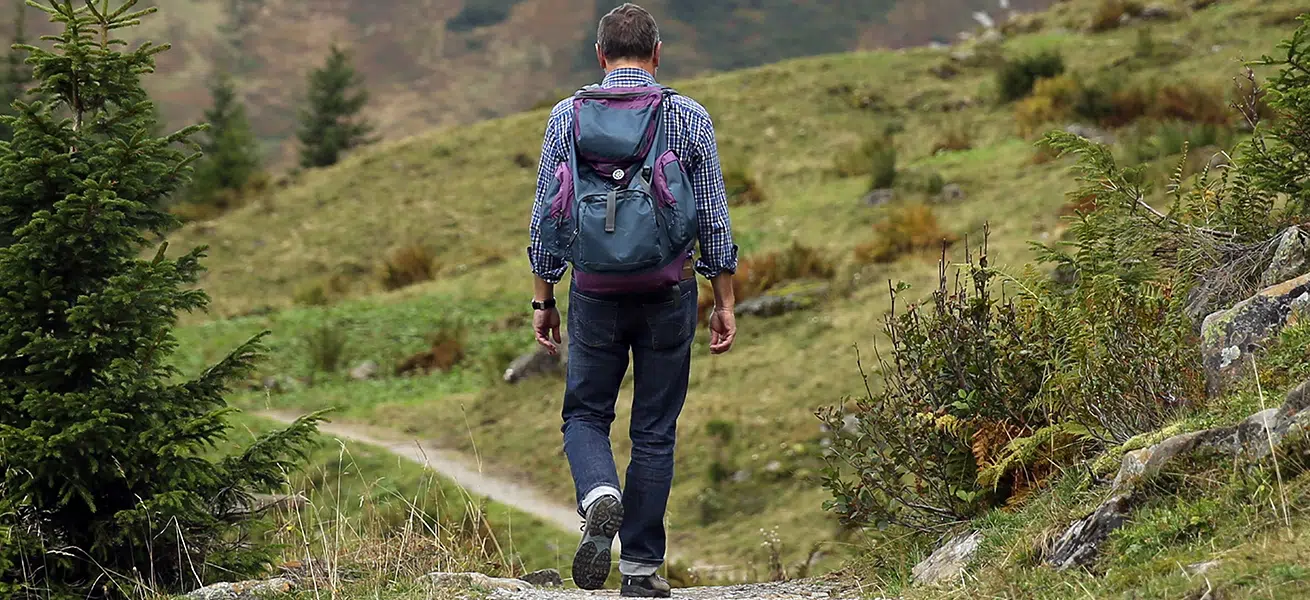Hiking without pain
Five advice for hiking with pleasure
Prof. Dr. Diehl gives tips on preparing for the next mountain tour
Often one wishes nothing in the summer nevertheless nothing more eagerly than to go into the alps and to climb there the next mountain, however straight seniors should be careful before their next mountain route. While hiking is generally considered a low-impact sport, which is certainly true for people with healthy joints. However, patients with increased joint wear, especially in the area of the kneecap, should exercise caution. Above all, a downhill slope puts a lot of stress on the kneecap and the joints due to the negative braking forces compared to a flat stretch of road or an uphill slope. Joint wear or arthrosis often cause pain here; as soon as retropatellar arthrosis, i.e. arthrosis of the kneecap, is present, hiking tours are expressly not recommended. In all other cases, you should follow a few tips to continue to enjoy the fresh mountain air without problems and thus prevent falls or twisting of the ankle.
Five tips to avoid injuries while hiking:
1. correct route planning
Here, above all, it is important to pay attention to the terrain to be hiked. Gravel or sandy paths, i.e. uneven surfaces, are potentially more dangerous than flat surfaces, because stones and pebbles are easier to bend over on and can injure the joints more quickly.
2. correct self-assessment
Try to assess yourself honestly at the beginning. Are you more of a beginner or a pro on the mountain? How much experience and condition do you have at the moment? These questions will help you create the perfect route for you and your joints. A beginner should start with a maximum tour of two hours and choose easy routes. You can increase in the coming expeditions. Also keep in mind that towards the end of a hike you will become more tired and therefore less focused. Here it is easier to become inattentive and twist your ankle. It is better to take a few more breaks, as you will not recover your joints, but you will refresh your concentration.
3. additional support
Trekking poles are discovered again and again in the field as an observer and for good reason, because they not only have a stabilizing effect on the joints, but also on their backs. This not only relieves your body weight, but also reduces the risk of twisting your ankle. However, it is crucial that you use the poles correctly and vary the length depending on the environment. If you are traveling on level ground, the poles should be set at elbow height; if you are climbing, the length must be shortened; if you are descending, the length must be increased.
4. on silent soles
Footwear also plays a very crucial role in their mountain tour. Sneakers can only be discouraged. Sturdy hiking boots that go over the ankle to prevent twisting in this way are a must. Equally important: a stable outsole and good cushioning.
5. training on the bike
One final tip is to be solidly prepared. Cycling is an excellent way to do this, as it challenges almost every muscle in the body. In addition, cycling is easy on your joints and increases their fitness. It’s best to start with 30 minutes a day, about three to four times a week. This will quickly get you and your joints fit for the mountain.






